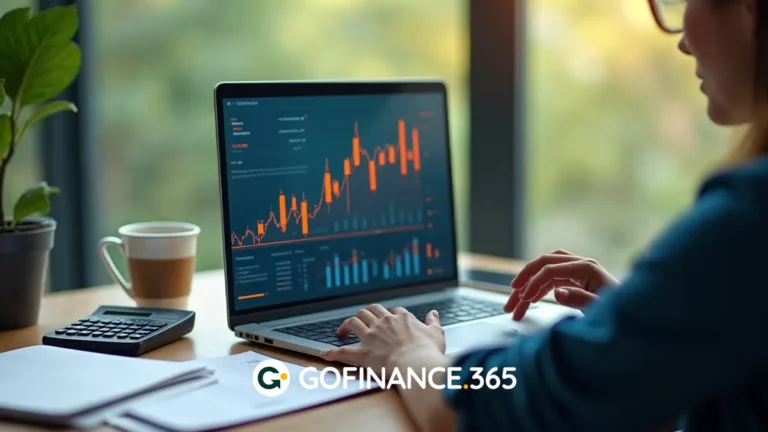Table of contents:
Did you know that many millionaires attribute their success to the power of compound interest? When you understand and apply compound interest to your personal finances, you can transform small amounts of money into substantial wealth over time.
In this practical guide, we’ll explain in clear and simple terms what compound interest is, exactly how it works, how to calculate it, which variables you need to consider, and, most importantly, how to use it to your advantage to grow your money exponentially.
Get ready to discover one of the best-kept secrets in finance—and change your approach to saving and investing forever!
What is compound interest and how does it work exactly?
Compound interest is the financial phenomenon where the interest earned is not only added to your initial principal but also starts generating additional interest itself. In other words, it’s a way for your money to work for you—not just once, but continuously and at an accelerating pace.
Understanding and applying this principle with discipline is what sets apart those who build lasting wealth from those whose savings merely stagnate. Let’s now examine how it differs from a concept that many still confuse with it: simple interest.
How compound interest differs from simple interest
Simple interest is calculated solely on the initial principal throughout the life of the investment. Each period, the amount of interest earned remains the same and does not contribute to future growth.
Compound interest, by contrast, reinvests the earned interest back into the principal. This means that during each new period, you earn interest not only on your original investment but also on the interest previously accumulated.
Over time, the difference between simple and compound interest becomes significant. In long-term investments, compound interest dramatically outperforms simple interest, offering much greater capital growth.
How is compound interest calculated?
Knowing how to calculate compound interest allows you to estimate the future growth of your investments and plan your financial goals more accurately. Although it may seem complex at first, it only requires understanding a few basic concepts and applying a simple formula.
The calculation takes into account not just the initial principal and the interest rate, but also the number of times the interest is reinvested during a given period. This combination of variables determines the magnitude of your final investment growth.
Let’s break down the calculation and explore the factors that influence it.
Basic compound interest formula
The formula to calculate the future value of an investment with compound interest is:
FV = PI × (1 + r/n)^(n×t)
Where:
- FV = Future value (the accumulated amount).
- PI = Initial principal (the amount you invested).
- r = Annual interest rate (expressed as a decimal, e.g., 5% = 0.05).
- n = Number of compounding periods per year.
- t = Number of years.
Applying this formula will help you visualize how much your investment could grow based on different variables.
Variables that influence the calculation: Initial capital, interest rate, time, and capitalization frequency
Each variable plays a crucial role in determining the final outcome:
- Initial capital: The larger your starting amount, the greater the base on which compound interest acts.
- Interest rate: Even small differences in rates can lead to significant changes in future value.
- Time: Time is the greatest ally of compound interest—the longer the money is invested, the more pronounced the exponential growth.
- Capitalization frequency: The more frequently your interest is reinvested (monthly, quarterly, annually), the greater the final return.
The interaction between these variables highlights why starting early, even with small amounts, can make a massive difference.
Practical examples with real figures
Imagine investing $5,000 at an annual interest rate of 7%, compounded annually:
- After 5 years: $7,013
- After 10 years: $9,835
- After 20 years: $19,386
Now, imagine compounding monthly instead of annually. Your investment could grow to over $21,000 in 20 years. These examples show that the key isn’t necessarily in investing large sums, but in leveraging time and capitalization frequency.
Advantages of compound interest for growing your money
Compound interest not only grows your money but also offers advantages unmatched by traditional savings strategies. Understanding these benefits will give you a deeper appreciation of why it’s crucial to incorporate compound interest into your financial planning.
One of the most compelling reasons to embrace compound interest is that it allows you to maximize your returns with relatively little effort. It simply requires an initial investment, consistency, and time.
Let’s take a closer look at two of its greatest strengths: exponential growth and the power of the long term.
Exponential growth of capital
Compound interest doesn’t grow your money in a straight line—it grows exponentially. By reinvesting earned interest, each new period brings in more interest than the last.
While growth may seem modest in the early years, over time, it becomes a powerful engine for wealth accumulation. It’s the famous “snowball effect” in action.
Thus, even relatively small but consistent investments can lead to spectacular results over time.
The power of the long term and reinvestment
Time is the magical ingredient in compound interest. The longer your money remains invested, the more powerful the reinvestment effect becomes.
A classic example: investing just $100 per month for 30 years at a 7% annual return could grow into more than $120,000—purely through the cumulative power of compound interest.
This is why, in personal finance, patience and a long-term vision are critical for success.
Strategies to make the most of compound interest and grow your money
Understanding compound interest is just the beginning. The real challenge lies in applying it strategically to your personal finances.
Maximizing compound interest means not only investing wisely but doing so consistently and using financial tools that allow automatic reinvestment of your earnings.
Here are some practical strategies you can start using right away.
Investments that apply compound interest: Interest-bearing accounts, funds, reinvested dividends
Some of the best options for harnessing compound interest include:
- Interest-bearing savings accounts: While offering modest returns, they allow for steady compounding.
- Index funds and mutual funds: These reinvest dividends and capital gains automatically.
- Stocks with dividend reinvestment plans (DRIPs): Many brokers offer automatic reinvestment options for dividends earned.
Choosing investment vehicles that reinvest returns automatically makes it easier to benefit from compound interest without extra effort.
The importance of consistency and patience
Investing regularly—even small amounts—over long periods makes a tremendous difference. Consistency often beats the size of initial contributions.
Patience is equally critical. Allowing your investments to grow uninterrupted enables compound interest to realize its full potential.
Use compound interest to build your financial freedom
Mastering compound interest and applying it diligently is one of the most reliable ways to achieve financial freedom. It doesn’t matter how much money you start with—the key is to start now, stay patient, and allow time to do the heavy lifting.
Every day you delay is a missed opportunity for growth. Start investing today, reinvest your earnings, and watch how the power of compound interest transforms your financial future.
Frequently asked questions about compound interest
Compound interest is a fascinating concept, but it often raises questions among beginners. Getting clear answers is essential for using it consciously and effectively.
Here are some of the most common questions about compound interest and its practical applications.
How long does it take for compound interest to generate significant returns?
Typically, you’ll start to notice visible growth after 5–7 years. However, the truly impressive effects appear after 15–20 years, when exponential growth takes full effect through continuous accumulation.
What is the best investment to take advantage of compound interest?
The best investments for compounding are those that offer strong returns, allow for automatic reinvestment, and are held for the long term. Low-cost index funds and dividend-paying stocks from stable companies are excellent choices.
Is compound interest safe?
The compound interest mechanism itself is completely safe. However, the level of risk depends on the underlying investment. It’s essential to diversify and select financial products that match your risk tolerance and long-term goals.















